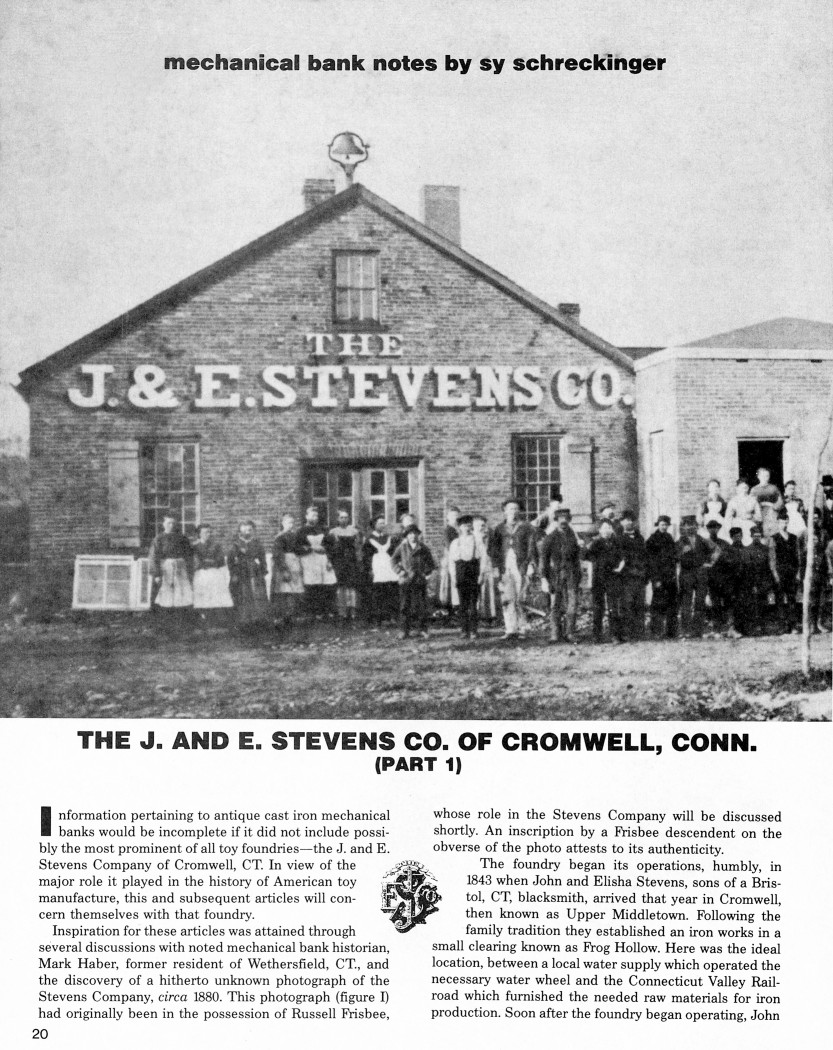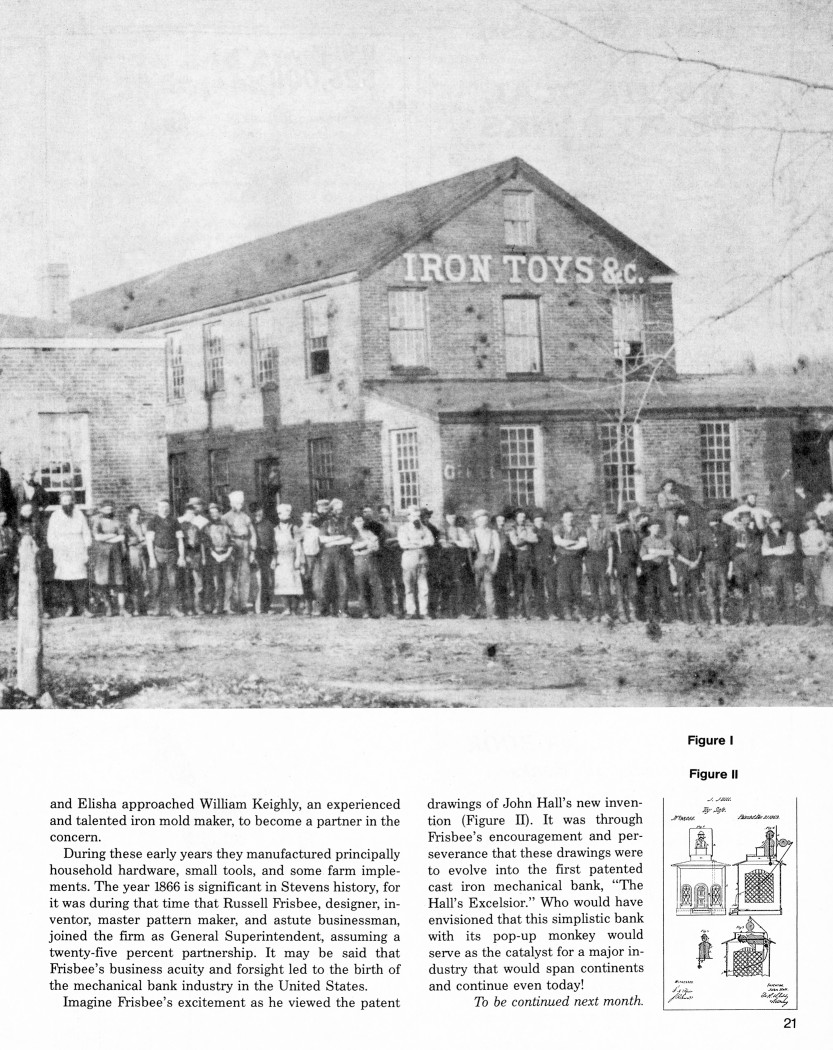|
The
J. & E. Stevens Co. of Cromwell, Conn.
(Part 1)
by Sy Schreckinger – ANTIQUE TOY WORLD Magazine – March, 1988
Information pertaining to antique cast iron mechanical banks would be
incomplete if it did not include possibly the most prominent of all toy
foundries—the J. and E. Stevens Company of Cromwell, CT. In view of the
major role it played in the history of American toy manufacture, this and
subsequent articles will concern themselves with that foundry.
Inspiration for these articles was attained through several
discussions with noted mechanical bank historian, Mark Haber, former
resident of Wethersfield, CT., and the discovery of a hitherto unknown
photograph of the Stevens Company, circa 1880. This photograph (figure 1)
had originally been in the possession of Russell Frisbee, whose role in the
Stevens Company will be discussed shortly. An inscription by a Frisbee
descendent on the obverse of the photo attests to its authenticity.
The foundry began its operations, humbly, in 1843 when John and
Elisha Stevens, sons of a Bristol, CT, blacksmith, arrived that year in
Cromwell, then known as Upper Middletown. Following the family tradition
they established an iron works in a small clearing known as Frog Hollow.
Here was the ideal location, between a local water supply which operated
the necessary water wheel and the Connecticut Valley Railroad which
furnished the needed raw materials for iron production. Soon after the
foundry began operating, John and Elisha approached William Keighly, an
experienced and talented iron mold maker, to become a partner in the
concern.
During these early years they manufactured principally household
hardware, small tools, and some farm implements. The year 1866 is
significant in Stevens history, for it was during that time that Russell
Frisbee, designer, inventor, master pattern maker, and astute businessman,
joined the firm as General Superintendent, assuming a twenty-five percent
partnership. It may be said that Frisbee's business acuity and foresight
led to the birth of the mechanical bank industry in the United States.
Imagine Frisbee's excitement as he viewed the patent drawings of John
Hall's new invention (Figure II). It was through Frisbee's encouragement
and perseverance that these drawings were to evolve into the first
patented cast iron mechanical bank, "The Hall's Excelsior." Who would have
envisioned that this simplistic bank with its popup monkey would serve as
the catalyst for a major industry that would span continents and continue
even today!
To be continued next month.
|


